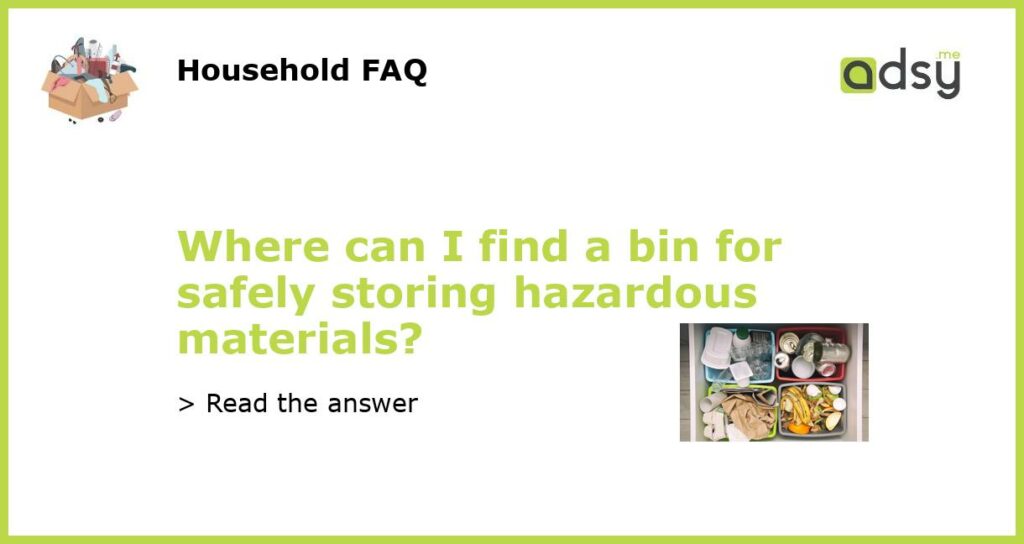The Importance of Properly Storing Hazardous Materials
Properly storing hazardous materials is crucial for the safety of individuals and the environment. Hazards materials can include chemicals, solvents, paints, batteries, and many other substances that can pose a risk if not handled and stored correctly. One essential component in safely storing hazardous materials is using a bin that is designed specifically for this purpose.
Types of HazMat Bins
There are various types of hazardous material bins available on the market. These bins are designed to meet specific safety standards and regulations to ensure the safe storage and transportation of hazardous materials. Some examples of HazMat bins include:
- Flammable storage cabinets: These cabinets are designed to store flammable liquids, such as gasoline and solvents. They are usually made of steel and have a fire-resistant design to minimize the risk of ignition and contain any potential fires.
- Chemical storage bins: These bins are used to store various chemicals, including corrosive substances and toxic materials. They are built to withstand the corrosive effects of the stored chemicals and prevent leaks or spills.
- Battery storage containers: These containers are specifically designed to store batteries, which can be hazardous due to their potential for leakage. They provide a secure and leak-proof environment for battery storage.
Where to Find Hazardous Material Bins
There are several places where you can find hazardous material bins:
- Industrial supply stores: Many industrial supply stores carry a range of hazardous material bins. These stores specialize in providing safety equipment and supplies for industries that deal with hazardous materials regularly.
- Online retailers: Numerous online retailers specialize in safety and industrial equipment. They offer a wide selection of hazardous material bins for purchase. These websites are convenient for browsing and comparing options, and they often provide detailed product descriptions and specifications.
- Environmental services companies: Companies that specialize in hazardous waste management and environmental services may also offer hazardous material bins. They can provide expert advice on choosing the right bin for your specific needs.
- Local waste management facilities: Some waste management facilities may offer hazardous material bins for sale or provide guidance on where to obtain them. These facilities are knowledgeable about hazardous waste regulations and can offer recommendations based on their expertise.
Considerations When Choosing a HazMat Bin
When choosing a hazardous material bin, there are several factors to consider:
- Material compatibility: Ensure that the bin is compatible with the specific hazardous materials you will be storing. Different materials may require different types of bins to prevent chemical reactions or degradation of the container.
- Size and capacity: Consider the volume and quantity of hazardous materials you will be storing. Choose a bin with sufficient capacity to accommodate your needs.
- Regulatory compliance: Make sure the bin meets all relevant safety regulations and standards, such as those set by OSHA (Occupational Safety and Health Administration) or other regulatory bodies in your country.
- Durability and construction: Look for bins made from robust and durable materials that can withstand the conditions in which they will be used.
- Security features: Consider features such as locking mechanisms or tamper-evident seals to prevent unauthorized access or tampering with the hazardous materials.
Safety First: Proper Handling and Disposal
Remember, having the right hazardous material bin is just one part of the equation. It is essential to handle, transport, and dispose of hazardous materials safely. Ensure that you and your staff are adequately trained in proper handling procedures, including the use of personal protective equipment. Additionally, follow the appropriate regulations for the disposal of hazardous waste. Improper disposal can lead to serious environmental contamination and potential harm to human health.






